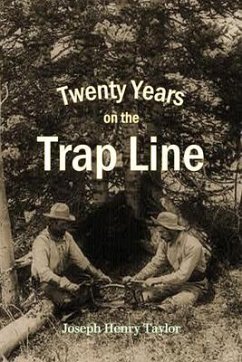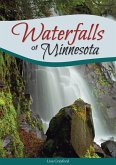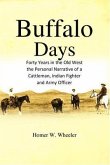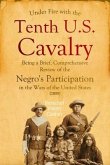"Taylor was a hunter and trapper at Painted Woods on the Missouri, has rare ability as well as opportunity for collecting material." -Ward County (N. D.) Reporter
"Spent several years with the Indians, engaged in trapping and hunting was a familiar character with all old-time Steamboat men on the Big Muddy." -The Bismarck Tribune (1908)
"A pioneer in the settlement of the upper Missouri river country, a hunter and trapper." - Bismarck Weekly Tribune (1895)
"A charming writer, and has the faculty of close observation usually well cultivated as is usual with all frontiersmen." -Fargo (N. D.) Forum
At a time when all Dakota was one vast battle ground for the "blood thirsty Sioux," the "Fost-eared Assinnaboines," "blackleg Anathaways," "painted Gros Ventres," "hidden faced Sisseton" and other "savage tribes," all engaged in a war of extermination, one tribe against another and all against the buffalo and the "pale face," Taylor survived as a hunter and trapper at Painted Woods on the Upper Missouri River.
Strange indeed would it be if any man who had passed so many years in this wild Dakota trapper's life should not have a tale to tell that were worth reading, and Taylor who had rare ability as an author tells his harrowing story of a trapper's life in his 1891 book "Twenty Years on the Trap Line." The book embraces the personal reminiscences of the author, of scenes and incidents along the upper Missouri river starting in 1867.
The author of the book was essentially a pioneer in the settlement of the upper Missouri river country. He came up the river from Yankton, before there was any settlement on the river where Bismarck stands now, and was at Painted Woods for years as a hunter and trapper. He is personally familiar, therefore, with all of the incidents of the early settlement of the country for miles up and down the Missouri river, and his work is the more interesting for that reason.
In describing one encounter with a war party, while trapping, Taylor writes:
"We were startled by rapid shots and loud yells. We looked in the direction of our lone pony and saw that he was surrounded by about twenty Indians yelling with a loud uproar. On discovering us they spread out like a fan, heading for our camp. Some of the Indians then commenced to yell in repetition, "Pah-don-ee-Pah-don-ee" (Sioux name for the Aricarees). They were a war party of Gros Ventres and Mandans...."
In describing his time as a "wolfer," Taylor notes that "the most frequented winter grounds of the professional wolf era on the southern plains were along the Republican and Smoky Hill Rivers of western Kansas, and the country about the neighborhood of the Staked Plains in northern Texas. The northern wolfer found their best grounds along the Milk, Muscelshell and Judith Rivers, and around the Bear Paw Mountains of Montana, and the Peace River country in Manitoba."
Joseph Henry Taylor (1845-1908) enlisted In the Union Army at the breaking out of the war, and served with credit. In 1864 he went to Iowa and this was the beginning of his adventurous career. After a trapping and hunting expedition in Iowa, he went to Yankton, then the capital of the territory of Dakota, in 1864 or 1865, becoming a trapper and living with Native Americans.
"Spent several years with the Indians, engaged in trapping and hunting was a familiar character with all old-time Steamboat men on the Big Muddy." -The Bismarck Tribune (1908)
"A pioneer in the settlement of the upper Missouri river country, a hunter and trapper." - Bismarck Weekly Tribune (1895)
"A charming writer, and has the faculty of close observation usually well cultivated as is usual with all frontiersmen." -Fargo (N. D.) Forum
At a time when all Dakota was one vast battle ground for the "blood thirsty Sioux," the "Fost-eared Assinnaboines," "blackleg Anathaways," "painted Gros Ventres," "hidden faced Sisseton" and other "savage tribes," all engaged in a war of extermination, one tribe against another and all against the buffalo and the "pale face," Taylor survived as a hunter and trapper at Painted Woods on the Upper Missouri River.
Strange indeed would it be if any man who had passed so many years in this wild Dakota trapper's life should not have a tale to tell that were worth reading, and Taylor who had rare ability as an author tells his harrowing story of a trapper's life in his 1891 book "Twenty Years on the Trap Line." The book embraces the personal reminiscences of the author, of scenes and incidents along the upper Missouri river starting in 1867.
The author of the book was essentially a pioneer in the settlement of the upper Missouri river country. He came up the river from Yankton, before there was any settlement on the river where Bismarck stands now, and was at Painted Woods for years as a hunter and trapper. He is personally familiar, therefore, with all of the incidents of the early settlement of the country for miles up and down the Missouri river, and his work is the more interesting for that reason.
In describing one encounter with a war party, while trapping, Taylor writes:
"We were startled by rapid shots and loud yells. We looked in the direction of our lone pony and saw that he was surrounded by about twenty Indians yelling with a loud uproar. On discovering us they spread out like a fan, heading for our camp. Some of the Indians then commenced to yell in repetition, "Pah-don-ee-Pah-don-ee" (Sioux name for the Aricarees). They were a war party of Gros Ventres and Mandans...."
In describing his time as a "wolfer," Taylor notes that "the most frequented winter grounds of the professional wolf era on the southern plains were along the Republican and Smoky Hill Rivers of western Kansas, and the country about the neighborhood of the Staked Plains in northern Texas. The northern wolfer found their best grounds along the Milk, Muscelshell and Judith Rivers, and around the Bear Paw Mountains of Montana, and the Peace River country in Manitoba."
Joseph Henry Taylor (1845-1908) enlisted In the Union Army at the breaking out of the war, and served with credit. In 1864 he went to Iowa and this was the beginning of his adventurous career. After a trapping and hunting expedition in Iowa, he went to Yankton, then the capital of the territory of Dakota, in 1864 or 1865, becoming a trapper and living with Native Americans.
Dieser Download kann aus rechtlichen Gründen nur mit Rechnungsadresse in A, D ausgeliefert werden.









